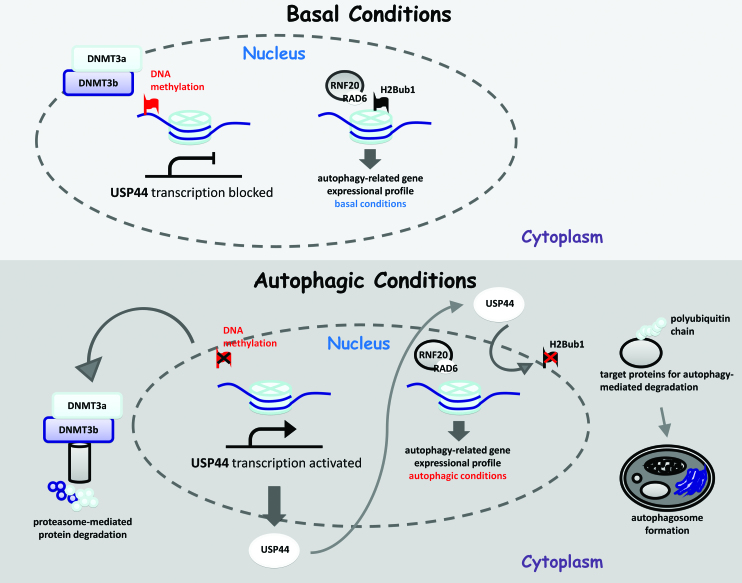Figure 7.
A working model for H2Bub1 regulation and autophagy under different cellular conditions. Under basal conditions, DNMT3a and DNMT3b maintain USP44 at a very low level by regulating DNA methylation, and further control H2Bub1 at relatively high levels, resulting in a basal gene expressional profile with lower autophagy activity. However, when the cells are exposed to starvation, both DNMT3a and DNMT3b are degraded via the ubiquitin-proteasome pathway, resulting in the activation of USP44 expression. The elevated USP44 protein further deubiquitinates H2Bub1, leading to a decrease in the H2Bub1 levels. The alteration of the H2Bub1 levels results in global changes in the expression of genes, especially those genes involved in autophagy. These changes in gene expression eventually contribute to the activation of autophagy after starvation.

